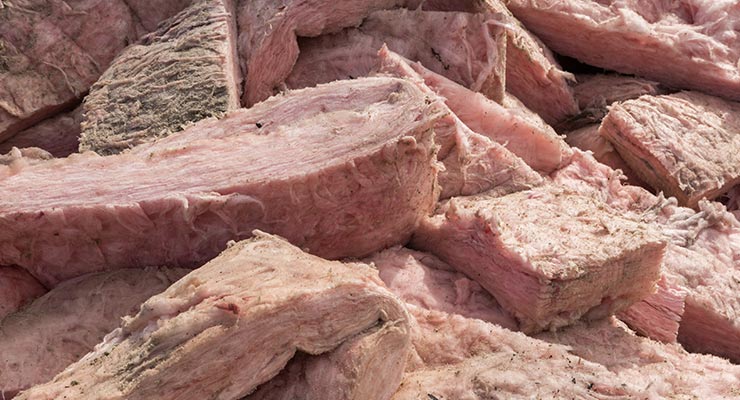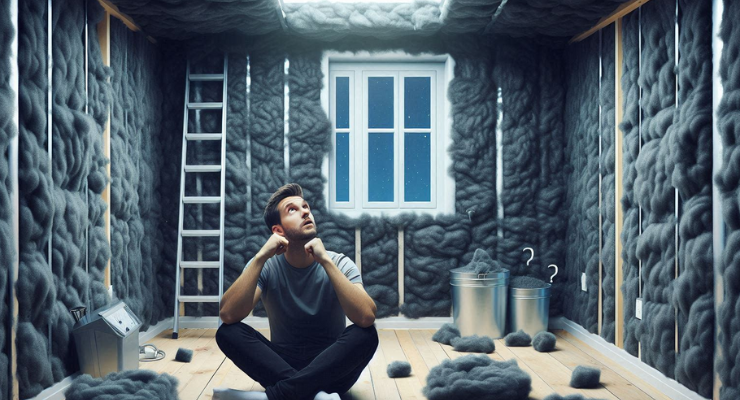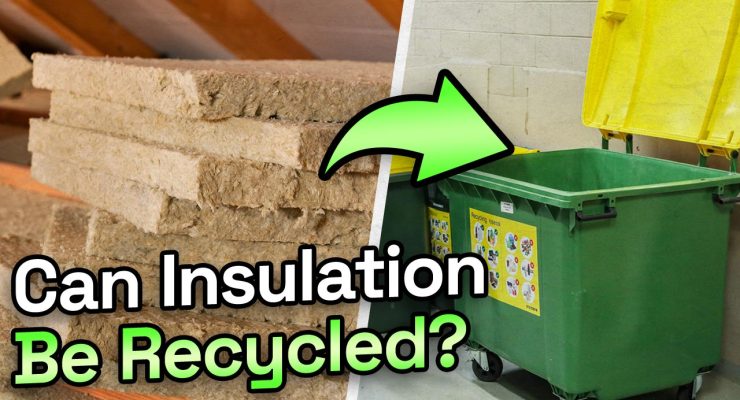Fast read
If your insulation is discoloured, black, or smells musty, it likely has mould. Mould develops due to condensation, water leaks, or poor air circulation, often going unnoticed until it's too late. To check for mould, inspect for black spots and musty odours, especially in ceiling or underfloor cavities. Address any water leaks or damp spots immediately to prevent mould.
If mould is present, remove the affected insulation and nearby materials. Use protective gear like disposable overalls, gloves, goggles, and a respirator to avoid inhaling spores. Dispose of contaminated materials in approved containers. Hiring a professional is recommended to ensure thorough removal. Mould exposure can irritate airways and cause long-term health issues like asthma. Taking precautions and promptly addressing moisture sources can save you time and health complications in the future.
Why Has My Insulation Turned Black?
Mould in insulation is a common problem that can have serious health implications. When insulation becomes discoloured with black spots and smells musty, it’s a clear sign of mould growth. This issue often arises due to condensation near the insulation, which can be difficult to detect until it’s too late. Taking preventive measures can save you a lot of time and aggravation in the long run.
Causes of Mould in Black Insulation
- Condensation: This is one of the primary causes of mould. Condensation occurs when warm, moist air meets a cold surface, creating moisture that can seep into your insulation.
- Lack of Air Movement: Poor ventilation in cavity spaces can trap moisture, providing an ideal environment for mould to grow.
- Water Leaks: Leaks from pipes, roofs, or windows can introduce water into your insulation, leading to mould.
- Humid Climates: Areas with high humidity levels are more prone to mould formation due to the constant presence of moisture in the air.
Detecting Mould in Insulation
Early detection of mould can prevent extensive damage and health risks. Here are some signs to look for:
- Discolouration: Inspect your insulation for any black or dark spots. These are often the first visible signs of mould.
- Musty Odour: If you notice a musty odour in your home, particularly around your ceiling or underfloor areas, it could indicate mould growth.
- Health Symptoms: If you or your family members experience respiratory issues, allergies, or asthma, mould might be the culprit.
Preventing Mould Growth
Preventing mould growth is crucial for maintaining a healthy home environment. Here are some steps you can take:
- Improve Ventilation: Ensure that your home is well-ventilated to reduce moisture levels. Use exhaust fans in bathrooms and kitchens, and consider installing a dehumidifier in areas prone to dampness.
- Repair Leaks: Regularly inspect your home for leaks and fix them promptly.
- Insulate Properly: Proper insulation can prevent condensation. Use insulation materials that resist moisture and mould growth.
- Control Humidity: Keep indoor humidity levels below 60%. Use air conditioners and dehumidifiers to control moisture levels, especially in humid climates.

Removing Mouldy Black Insulation
If you find mould in your black insulation, it’s important to act quickly to prevent further spread and health risks. Here’s a step-by-step guide to safely remove mouldy black insulation:
- Protect Yourself: Wear protective equipment such as disposable overalls, gloves, goggles, and a face respirator to avoid inhaling mould spores.
- Isolate the Area: Seal off the affected area to prevent mould spores from spreading to other parts of your home.
- Remove Mouldy Insulation: Carefully remove the mouldy black insulation, placing it in heavy-duty plastic bags for disposal. Ensure that you also remove any adjacent insulation that might be contaminated.
- Dispose of Contaminated Building Materials: Dispose of the contaminated black insulation and drywall in approved trash disposal containers.
- Clean the Area: After removing the insulation, thoroughly clean the area with a mould-killing solution. Use a HEPA vacuum to remove any remaining mould spores.
Hiring Professionals
While DIY removal is possible, hiring a professional mould removal service is often the best course of action. Experts have the skills and tools to safely and efficiently remove mould, making sure your home is clean and safe. Here are some benefits of hiring a professional:
- Thorough Inspection: Professionals can conduct a comprehensive inspection to identify all affected areas.
- Safe Removal: They use specialised equipment and techniques to remove mould without spreading mould spores.
- Preventative Measures: Professionals can provide advice and solutions to prevent future mould growth.
Health Risks of Mould Exposure
Exposure to mould can have serious health consequences, particularly for individuals with respiratory issues, allergies, or weakened immune systems. Some common health problems associated with mould exposure include:
- Respiratory Issues: Mould spores can irritate the airways, causing coughing, wheezing, and shortness of breath.
- Allergic Reactions: Symptoms include sneezing, runny nose, red eyes, and skin irritation.
- Asthma: Mould exposure can trigger asthma attacks and worsen symptoms for individuals with asthma.
- Long-term Health Concerns: Prolonged exposure to mould can lead to chronic respiratory conditions and other serious health problems.
Final Thoughts Of Black Insulation
Mould in insulation is a serious issue that requires prompt attention. By understanding the causes, signs, and preventive measures, you can protect your home and health from the dangers of mould. Regular inspections and maintenance, coupled with proper ventilation and moisture control, can significantly reduce the risk of mould growth.
If you do find mould, don’t hesitate to take action, whether through DIY removal or by hiring professionals. Remember, the key to a healthy home is preventing mould before it becomes a problem.



